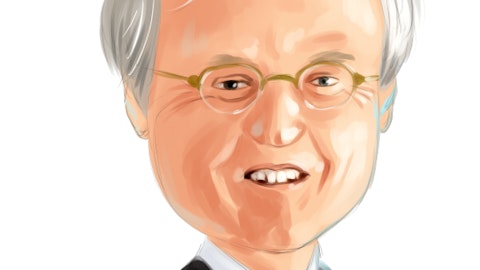Kevin Fischbeck: Hey, so I guess on the call last quarter, you mentioned that I think that there’s a tailwind this year from start-up losses year-over-year. Can you just remind us kind of how we should be thinking about that? And then you kind of in your opening remarks mentioned that this year is kind of still a normalization off of COVID. I mean do you feel like 2023 is now going to be a solid base off of which we should be expecting normal growth in acute and psycho. Do you feel like because of the way you’re assuming progression through the year on these dynamics that even 2024 could see some year-over-year SKU comparisons? Thanks.
Steve Filton: Yes. So as far as your first question on start-up losses, Kevin, we mentioned in €“ or I mentioned in today’s call that we had $10 million in the quarter, I think we had said at the in our third quarter call that we had $45 million of year-to-date start-up losses. So $55 million for the year. The biggest chunk of that is our acute care hospital that we opened early in 2022 in Reno, that’s probably a $30 million, $35 million swing from 2022 to 2023, a positive swing. The other $15 million, $20 million of losses are a handful, maybe three or four behavioral openings in the year, maybe four or five, and we probably have a similar number of openings next year. I think we believe we’ll do a little bit better in emerging from the pandemic and getting these things ramping up faster.
But I wouldn’t necessarily describe that as a material tailwind. So I think we’ve got about a $30 million, $35 million tailwind in the budget for our turnaround in our Reno hospital. As far as just sort of how we think about 2023, is it sort of kind of a clean post-pandemic year, Marc made comments in his opening remarks about the idea that, number one, I think we view 2023 as a transition year, and we do so because I think one of the lessons that we’ve learned during the pandemic is that even as COVID volumes decline, there is this sort of transition period as nurses returned to their regular jobs and physicians return to their regular practices and patients return to their regular utilization practices, et cetera. So I think we think about that occurring gradually over the course of 2023.
I would say probably the back half of 2023 looks a lot more like maybe the back half of 2019, the last sort of COVID-free half a year that we’ve experienced. And then in 2024, I would imagine, unless there is some unforeseen development begins to look like a really true post pandemic year.
Kevin Fischbeck: Great. Thanks.
Operator: Our next call comes from the line of Jamie Perse with Goldman Sachs. Jamie, please stand by. Jamie?
Jamie Perse: Hey, good morning. Can you guys hear me okay?
Operator: Yes.
Steve Filton: We can.
Jamie Perse: Okay. Great. First, just a quick numbers question. Can you provide the revenue base for the insurance subsidiary and what the margin looks like on that? And then my longer-term question is just for in this structurally higher wage inflation environment for nurses, given the tightness in that market, what can you do over the medium term to just get more efficient? What does that mean for care team design or investment in labor-saving technologies? Just anything you’re doing to become more efficient on the labor front?
Steve Filton: Yes. So in answer to your question about our insurance subsidiary in the Acute segment, it has roughly or will have in 2023, about $400 million of premium revenue and we’ll run as we sort of discussed in the past, kind of a modest margin in the low single digits. The real motivation in operating that insurance subsidiary is to create sort of a full continuum of care in our acute care markets, greater integration with our physicians, et cetera, it’s not really designed to be terribly profitable on its own. As far as your second question about recruitment retention, look, there’s a lot of things, and we could have a whole separate hour-long call. And Marc, I think, alluded to multiple recruitment and retention initiatives that we’ve implemented during the pandemic.




